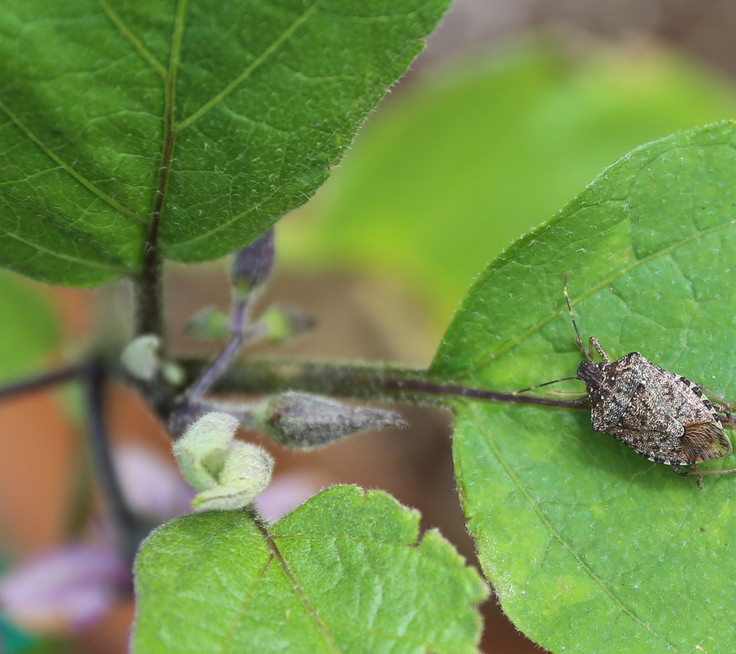

Kevin Fogle
If brown marmorated stink bugs have been a problem in your garden this year, there are controls you can use to help eliminate or reduce their destruction in the garden. However, for organic and conventional gardeners alike, your options are pretty limited.
Hand-Picking And Barrier Methods
For small front yard gardens like mine, hand-pick the pests and toss them in a bucket of soapy water. Be quick and thorough when collecting stink bugs, as they can quickly hide in deep vegetation or fly away when initially disturbed. Keep an eye out for their light-green egg masses, usually with about 25 to 30 perfectly elliptical eggs, found on the underside of leaves. Alternatively, consider utilizing floating row covers to eliminate stink bugs and many other insect pests entirely if row covers are appropriate for your particular crop or feasible for the size of your garden.
Organic Sprays
Some organic sprays labeled for stink bugs are available on the market, but anecdotal evidence from fellow gardeners suggest that these sprays are all relatively mixed in their efficacy. Even many conventional pesticides are not particularly successful at managing brown marmorated stink bug populations when applied at a recommended dosage, which certainly makes these insects tough to deal with.
Traps
Pheromone-based traps are also available. As with Japanese beetle traps, aggregation pheromone lures aimed at stink bugs will successfully capture numerous native and invasive stink bugs. The downside to these types of traps is that they also result in a higher stink-bug population in area immediately surrounding the trap, often leading to increased insect damage in the whole area. When you see entomologists employing these types of lure based traps they are not for insect control but for geographic distribution studies to examine the spread and density of stink-bug populations.
Searching For Solutions
There is hope on the horizon however as researchers are looking at a number of ways to stop this invasive pest through both original investigations and by collaborating with their agricultural counterparts in China and Japan where brown marmorated stink bugs have long been problematic. Entomologists in North America have even found several specimens of an Asian parasitic wasp species that preys on the pest’s eggs. This wasp and other natural controls could end up being an important tool in the fight against this growing agricultural threat.
Read more of Garden In Front »




